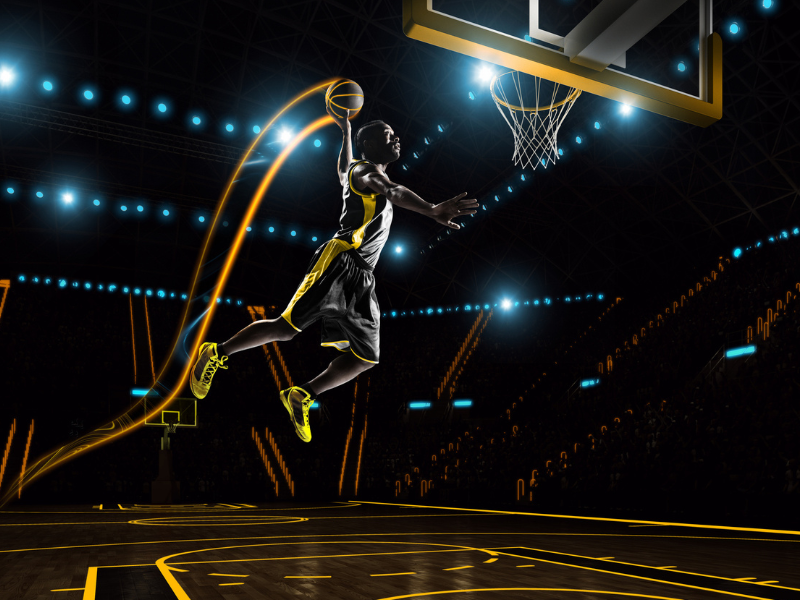
The future of video: your front-row seat
4-minute read
Get ready for a future that takes your video and streaming experience to a whole new level.
It will likely come as little surprise that watching videos is a favourite way for many Australians to use their internet connection.
If you’re among the 69 per cent of Australians with a streaming service, you already know how big video is. This also goes for anyone who's seen the rise of video on social media, or who has connected with colleagues, clients and family via video calls.
From our own data here at nbn, we know that video accounts for around half of the ever-growing volume of traffic on our network.
And while the high-definition 4K video that’s available today is already a great experience, researchers and developers are working on technology that will make the future of video even more immersive and compelling.
Let’s look at some of the ways our video experiences could be transformed in the next few years.
Elevating your experience
Today’s 4K video delivers a significant improvement in viewing experience compared to the previous options available, including standard definition.
A major reason for that leap is greater availability of high-speed internet networks, like the nbn® network, which have way more data capacity than traditional broadcast TV. Helping to make 4K content available across Australia is something we’re proud to have spearheaded.
One thing 4K has in common though with older TV tech is that the picture is still two-dimensional.
There have been attempts at popularising 3D video before but, in 2024, the push to deliver immersive 3D video and virtual reality experiences seems to have gained new momentum.
Headsets, like Apple Vision Pro, Microsoft's HoloLens and Meta's Quest, are laying the groundwork for a new generation of engaging experiences, from virtual face-to-face meetings to immersive gaming and video content.
Vision Pro is also driving the rise of spatial 360-degree video, which intuitively blends your computing experience with the real world around you. Meanwhile, Quest is the gateway to new virtual worlds in the fledgling multiverse.
Three-dimensional video using technologies like these looks stunning but comes with even higher data demands than 4K video.
For example, Vision Pro needs an internet connection of at least 100 Mbps to deliver its best experience, compared to the 25 Mbps generally recommended for 4K TV.
More than just speed, virtual reality systems like these also need low latency connections that deliver high speeds consistently.

Taking sports fans to the next level
At the annual CES technology show in the US earlier this year, I had the opportunity to see some of the new video technology being developed and hear first-hand from those driving the video revolution.
One concept that really impressed was using deeply immersive video to augment fan experiences of live sport, both at home and in the stadium.
In the future, sports coverage could include images and data from hundreds of cameras and sensors at the stadium, as well as outside sources like fan-generated content. At the stadium, personalised video will help make sure fans never miss moments that matter.
At home, fans will have the chance to feel like they are there in person with immersive 360-degree 3D images that recreate the stadium in front of them, as well as providing new views, angles and more personalised coverage. Artificial intelligence will be at the forefront of these new experiences, often using tech pioneered in the gaming industry.
For sports, like golf, that happen outside the confines of a stadium, the changes are potentially even more revolutionary, giving fans access to the action in ways that haven’t been possible with traditional broadcasts or by following the players around the course as a spectator.
Key to these new experiences will be the ability to connect to high-speed internet, both for the fans and the venue operators, as well as the teams and the players.
With so much data and information becoming part of the coverage, broadcasters will need to link computing power and Artificial Intelligence systems living in the cloud to the smart cameras and other devices capturing the action. To do that, they’ll need fast networks with low latency and a shed load of capacity.
As sports coverage becomes more personalised and interactive, fast data uploads will become just as important as fast downloads for venues, broadcasters and fans.

Getting ready for our video future
Streaming video is one of the major reasons that Australia’s demand for data has doubled in the past five years. With the average TV size also getting larger, and 8K TVs now coming to the market, all indications are that we’re going to see even more engaging and immersive video experiences in the future.
As we watch more immersive experiences on bigger screens and more devices, our networks will need to be ready to keep up with the data demand. nbn's fibre network is built with this kind of future in mind.
We’re already working with a range of organisations, including Foxtel and others, to test their new equipment and services to ensure they perform as expected and provide viewers with a great experience.
Of course, part of nbn's role is to ensure that, as these new data-intensive video streaming services evolve, the great experiences they deliver will be available to all Australians.
We’re constantly working to upgrade the speeds available right across our network and to ensure that more Australians have access to our premium fibre services and other technologies, including our ground-breaking Fixed Wireless access network, which will also be capable of delivering these next-generation video services.
As the next generation of fully immersive, data-intensive video comes to lounge rooms across the country, nbn is ensuring you can have a front row seat.

